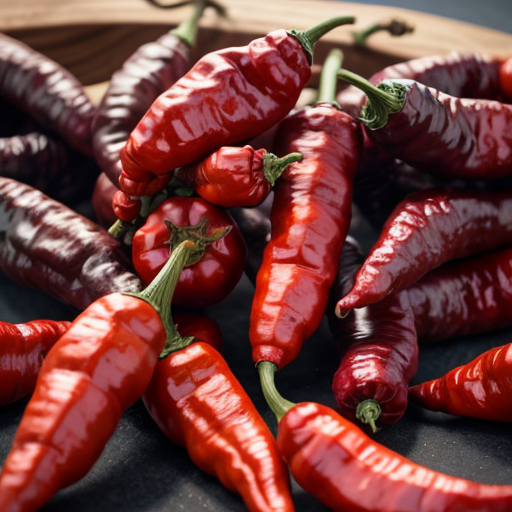
Capsaicin is a substance found in chili peppers, which are plants in the Capsicum genus. It causes a burning sensation in tissues it touches and acts as a chemical irritant and neurotoxin for mammals, including humans. Chili peppers produce capsaicin and similar compounds called capsaicinoids as a defense mechanism, likely to deter certain mammals and fungi. Pure capsaicin is a colorless, pungent, crystalline solid that repels water.
Capsaicin is present in large quantities in the placental tissue, which holds the seeds, the internal membranes, and to a lesser extent, the other fleshy parts of the fruits of plants in the genus Capsicum. The seeds themselves do not produce any capsaicin, although the highest concentration of capsaicin can be found in the white pith of the inner wall where the seeds are attached.
The seeds of Capsicum plants are dispersed predominantly by birds. In birds, the TRPV1 channel does not respond to capsaicin or related chemicals but mammalian TRPV1 is very sensitive to it. This is advantageous to the plant, as chili pepper seeds consumed by birds pass through the digestive tract and can germinate later, whereas mammals have molar teeth which destroy such seeds and prevent them from germinating. Thus, natural selection may have led to increasing capsaicin production because it makes the plant less likely to be eaten by animals that do not help it disperse. There is also evidence that capsaicin may have evolved as an anti-fungal agent. The fungal pathogen Fusarium, which is known to infect wild chilies and thereby reduce seed viability, is deterred by capsaicin, which thus limits this form of predispersal seed mortality.
The vanillotoxin-containing venom of a certain tarantula species, Psalmopoeus cambridgei, activates the same pathway of pain as is activated by capsaicin, an example of a shared pathway in both plant and animal anti-mammalian defense.
The compound, initially extracted in an impure form in 1816 by Christian Friedrich Bucholz, was noted by German pharmacologist Rudolf Buchheim in 1873 and by Hungarian doctor Endre Hőgyes in 1878. They reported that "capsicol," which is partially purified capsaicin, caused a burning sensation upon contact with mucous membranes and increased the secretion of gastric acid.
The Capsicum genus separated from Solanaceae 19.6 million years ago, which is 5.4 million years after Solanaceae appeared. The evolution of chilies into distinct species occurred rapidly in the last 2 million years. A key compound in peppers, known as capsaicin or 8-methyl-N-vanillyl-6-nonenamide, played a role in this evolution. Capsaicin evolved similarly in chili species, driven by genetic drift and natural selection across the Capsicum genus over centuries. Despite the global distribution of chili peppers within the Capsicum genus, capsaicin in all of them shares common defensive and adaptive features. Its evolution aimed to enhance the peppers' fitness by protecting them against fungal infections, insects, and granivorous mammals.
This website was conceived and designed in VIM - Vi IMproved version 8.2.2637 and is powered by my new Alma Mater
Text and illustration (C) Eduard Pech, based on Wikipedia information